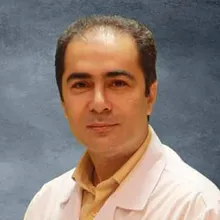Prostate Cancer: Symptoms, Diagnosis, and Advanced Treatment Methods
Prostate cancer is one of the most common types of cancer in men, especially those over 50 years of age. The disease begins in the prostate gland, which is part of the male reproductive system and responsible for producing a portion of seminal fluid. Prostate cancer typically grows slowly and, in many cases, remains asymptomatic for a long time. Recent advancements in medical science have significantly improved the diagnostic and treatment methods for this type of cancer. In this article, we will provide a detailed overview of the symptoms, diagnostic strategies, and treatment methods for prostate cancer.
Symptoms of Prostate Cancer
In the early stages, prostate cancer may not exhibit any obvious symptoms. However, as the disease progresses, some common signs may include:
- Urinary Problems: Frequent urination, difficulty starting or stopping urination, weak urine flow
- Blood in Urine or Semen
- Pain or Burning Sensation During Urination
- Pain in the Pelvic Area, Lower Back, or Thighs
- Sexual Dysfunction or Erectile Dysfunction
- Feeling of Incomplete Bladder Emptying
If any of these symptoms are observed, it is crucial to visit a doctor for evaluation and an accurate diagnosis.
Diagnostic Methods for Prostate Cancer
Early and accurate diagnosis of prostate cancer plays a key role in successful treatment. Physicians typically use a combination of the following methods:
- PSA Test (Prostate-Specific Antigen): This test measures the level of PSA in the blood; elevated levels may indicate cancer or other prostate-related issues.
- Digital Rectal Exam (DRE): The doctor physically examines the prostate gland through the rectal wall to detect any abnormalities.
- Multiparametric MRI of the Prostate: Advanced imaging to better assess masses and determine the need for a biopsy.
- Prostate Biopsy: A sample of prostate tissue is taken and examined under a microscope to determine the type and grade of cancer.
- Bone Scans and CT scan: In advanced cases, these methods are used to check for the spread of cancer to other parts of the body.
Treatment Methods for Prostate Cancer
The choice of treatment depends on the stage of the disease, the degree of cancer aggression, the patient’s age, and overall health. The main treatment methods include:
- Active Surveillance: In cases where cancer is growing slowly and poses low risk, doctors may recommend regular monitoring without immediate treatment.
- Surgery (Prostatectomy): This method involves the removal of the entire prostate gland, and sometimes the surrounding tissue. Surgery can be performed through traditional open surgery, laparoscopic surgery, or robotic-assisted surgery.
- Radiotherapy: The use of radiation to destroy cancer cells. It can be delivered externally (external beam radiation therapy) or internally (brachytherapy).
- Hormone Therapy (ADT): This treatment reduces or blocks the effects of testosterone, which stimulates the growth of prostate cancer cells. It may be used alone or in combination with other treatments.
- Chemotherapy: Typically used in advanced prostate cancer or in cases resistant to hormone therapy. Chemotherapy drugs target cancer cells throughout the body.
- Targeted Therapy: The use of drugs that specifically target molecular pathways in cancer cells.
- Immunotherapy: Strengthening the body’s immune system to fight cancer cells, which can be effective for certain patients with specific conditions.
Prevention and Post-Treatment Care
While complete prevention of prostate cancer may not be possible, there are measures to reduce the risk of developing it:
- Healthy Diet: Consuming fruits, vegetables, low-fat foods, and avoiding processed and fatty meats
- Regular Exercise: Enhancing immune function and maintaining a healthy weight
- Quit Smoking and Limit Alcohol Consumption
- Regular Medical Checkups: Particularly after the age of 50, or earlier if there is a family history
- Psychological Care: Counseling and emotional support to cope with the emotional and psychological challenges after diagnosis and treatment
Conclusion
Prostate cancer is one of the most common, yet treatable, types of cancer in men. By utilizing advanced diagnostic methods and specialized treatments, many patients can recover and lead healthy lives. Early detection, working with specialized doctors, following treatment recommendations, and post-treatment care are key factors in the success of treatment. Additionally, increasing public awareness of this disease can play an important role in reducing mortality rates associated with prostate cancer.




















